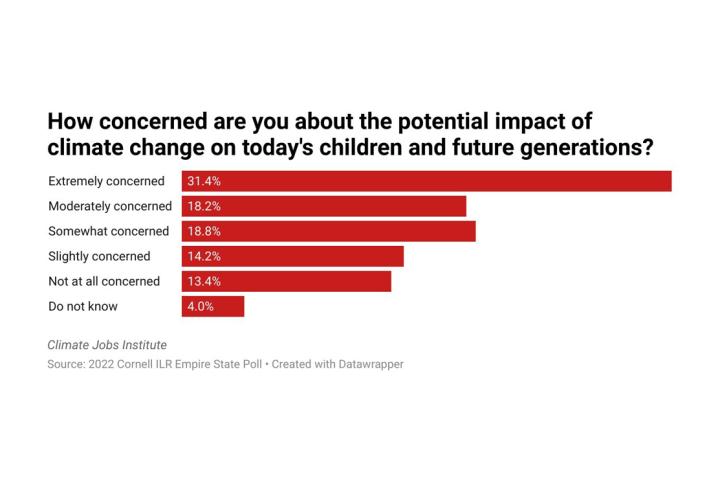
Reversing Inequality, Combatting Climate Change
A Climate Jobs Program for New York State
Introduction
Economic inequality in New York is rising. Currently, the state has the second highest level of economic inequality in the country. Unequal job growth across the state and stagnant wages in several sectors are two of the main contributors to rising inequality. While the state overall has seen several years of employment growth, there are stronger employment gains in New York City than in other parts of the state still suffering from job losses and stagnant employment levels. Additionally, in many sectors, such as construction and manufacturing, wages are not increasing at the same pace as inflation, leaving many workers with paychecks that fail to cover basic household costs
At the same time, New York is falling far short of its necessary greenhouse gas pollution reductions. To stop catastrophic climate change, global greenhouse gas emissions must be reduced at least 80 percent below 1990 levels by 2050, which would require four times the current annual emissions reduction rate. By 2050, New York State’s emissions must be only a fraction of what they are now to meet the United Nations’ Intergovernmental Panel on Climate Change’s targets set to prevent irreversible damage. We are far from that target. In the transportation sector, emissions are actually increasing and energy sector emissions may also be increasing given likely underestimation of methane emissions from natural gas.
New York State can take action now to protect New Yorkers from the worst effects of climate change, and do our part in reducing global emissions, while also fighting against growing economic inequality. Extreme weather, such as Hurricanes Irene and Sandy, is predicted to become more the norm, not the exception. These recent extreme weather events highlighted New York’s deep inequality: some could afford to leave the city or move into hotels when their residences flooded while others were left stranded.
Adopting a bold and aggressive plan to invest in climate-addressing infrastructure can be an important step towards simultaneously addressing the crises of inequality and climate change head on and position New York as a national leader in charting the path to a low-carbon, equitable economy. The recommendations presented below aim to create good, high-road jobs that provide family sustaining wages and benefits for communities across the state. These proposals could also result in meaningful emissions reductions and put New York on the path to building an equitable clean-energy economy that can work for all New Yorkers. The authors hope this report helps spark additional research and policy development on how to simultaneously reduce greenhouse gas emissions and reverse inequality by protecting workers and creating good, family-sustaining jobs in new lowcarbon sectors. Future research, in particular, could perform a detailed analysis of the cost of job creation strategies in low-carbon sectors, how to finance these strategies, and a cost-benefit analysis that includes the cost of potential job loss and reduced economic activity in high-carbon sectors.
For a copy of the full report, please visit https://archive.ilr.cornell.edu/download/77516.




